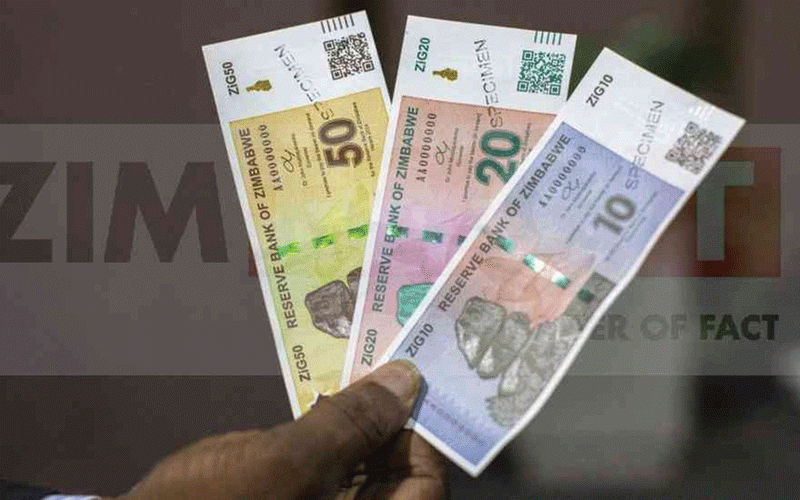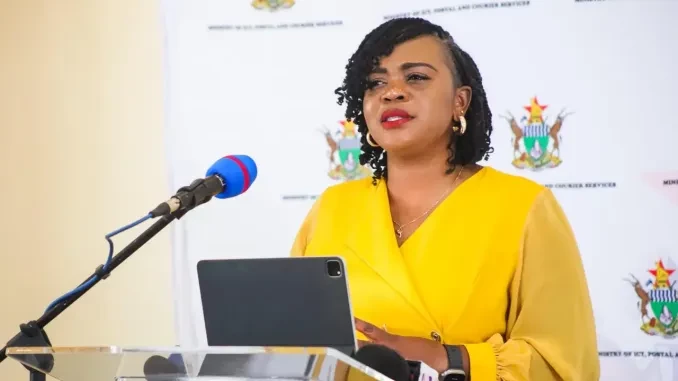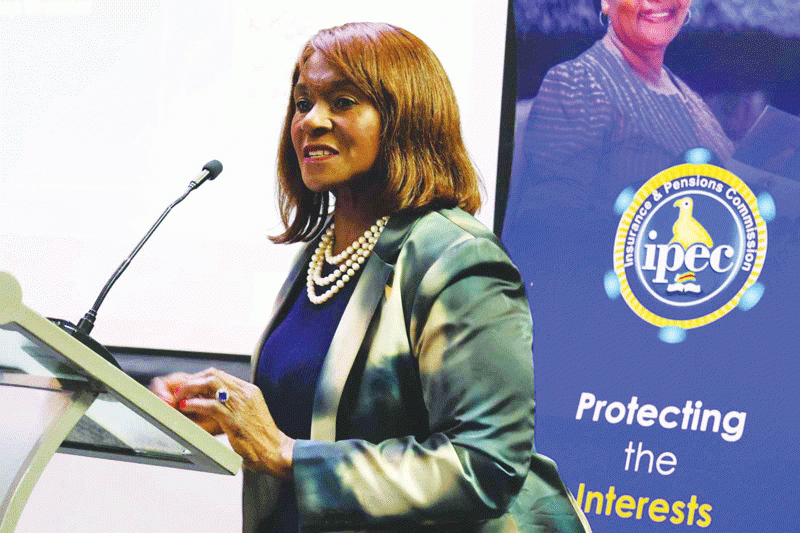
THE structured dialogue platform (SDP) was established by the Treasury in December 2022 to institutionalise structured dialogue on reforms underpinning the arrears clearance and debt resolution process with all creditors and development partners.
This process is led by African Development Bank (AfDB) president Dr. Akinumwi Adesina, who has been designated as the champion of the process, and former president of Mozambique Joaquim Chissano, who has been designated as the high-level facilitator.
The SDP is divided into three sector working groups focusing on economic reforms, governance reforms, and land tenure reforms.
This column, therefore, tracks and analyses the prospects for SDP success in permanently resolving Zimbabwe’s debt crisis.
Zimbabwe public debt profile
Zimbabwe is struggling with a huge debt overhang. Available official statistics from the Public Debt Management Office (PDMO) show that as of September 2022, total public and publicly guaranteed (PPG) debt stood at US$17,6 billion, up from US$17,2 billion recorded in December 2021.
The PDMO attributed debt increase to new disbursements for ongoing government projects, Reserve Bank of Zimbabwe (RBZ) borrowing, and the continuous accumulation of penalties.
Statistics show external debt at 79,59% (US$14,04 billion) of total PPG debt stock with arrears and penalties alone accounting for almost 50% of this total.
- Muckracker: ZIMSAT-1: Massive musical galas across country a must
- Zim diplomats sign performance contracts
- Middle-income economy by 2030 just pie in the sky
- Demystifying debt dialogue process
Keep Reading
Debt sustainability
According to the IMF, public debt is considered to be sustainable if the government can meet all its current and future obligations without exceptional financial assistance or going into default.
There are many indicators of debt sustainability, which include the debt-to-GDP ratio, debt-to-exports, debt service-to-exports, debt-to- budget revenue, and debt service-to-budget revenue among others.
Most of these indicators, however, show that Zimbabwe’s debt is unsustainable and the nation requires debt restructuring.
Zimbabwe public debt strategy
To resolve the debt distress, Treasury developed an Arrears Clearance, Debt Relief, and Restructuring Strategy (in short, a debt resolution strategy) in 2022.
The debt resolution strategy proposes two options; joining the Heavily Indebted Poor Country (HIPC) Initiative and a non-HIPC route involving debt restructuring and arrears clearance via bridge financing and use of own resources.
Debt arrears clearance initiative so far In its quest to resolve the debt crisis, Zimbabwe started paying token payments to Paris Club in 2021 for the first time in 20 years. This is a display of good gesture to creditors by acknowledging existing obligations.
The Treasury has also improved on debt transparency relative to regional counterparts as shown by the annual publication of the Statement of Public Debt alongside the national budget as well as public dissemination of annual borrowing plans, citizens budgets, and budget performance reports.
While there is still a lot to be desired in Zimbabwe’s budget processes, the upward trajectory of its global ranking by IBP since 2019 is a welcome development.
Now, after developing its debt resolution strategy, the nation is undertaking high-level debt forums to provide a dialogue platform that is key to building confidence, consensus, and trust.
The dialogue platform is also inclusive in the sense that it includes among others all creditors, development partners, government officials, Parliament, sector working groups including civil society organisations (CSOs), technical advisors, academia, and media houses.
Targeted reform areas
Zimbabwe’s high-level structured debt dialogue has three key pillars; economic reforms, governance reforms, and land tenure reforms. From the economic reforms front, authorities will work on the establishment of a market-determined exchange rate to eliminate multiple exchange rates prevailing in the market, expedite ZWL price discovery, and thwart existing pricing distortions causing chronic inflation.
Also, they will aim to end quasi-fiscal operations (QFOs) by the Reserve Bank of Zimbabwe (RBZ). These QFOs are not transparent and are the major driver of exchange rate instability.
Ending QFOs will improve fiscal prudence since all spending and borrowing will be conducted via Treasury thus stimulating discipline.
In addition, authorities will tighten monetary policy and pursue sound fiscal management to curb inflationary pressures.
Also, the focus will be on government revenue collection, expenditure management, and public service delivery. This will help reduce the leakage of public resources caused by corruption and illicit dealings, improve the performance of parastatals and state-owned enterprises (SOEs), and ensure the availability of social protection.
From a governance reforms front, authorities will work on enhancing justice delivery to ensure the existence of impartial judicial systems and processes, effective law enforcement, secure property rights regime, and improved state and non-state compliance with the law.
Also, governance reforms will target increasing public sector transparency and accountability to reduce the undue influence on government, increase disclosure and accessibility of public records and cultivate a culture of both institutional and civic checks and balances.
More so, governance reforms are key as they will lead to strong anti-corruption mechanisms, subdue corruption in state institutions and the public sector, and reduce corruption in public procurement procedures.
Again, governance reforms will help correct Zimbabwe’s tarnished human rights record as they enhance security, safety, and respect of freedoms including inter alia political, economic, religious, association, assembly, expression, and information.
Last but not least, the governance reform pillar includes electoral reforms to promote civil society activities, enhance political pluralism, and holding of regular democratic elections.
Finally, the land tenure pillar will ensure the transferability and bankability of tenure systems in Zimbabwe. If fully instituted, these will reduce reliance on the State as farmers are forced to take farming as a business thereby helping free up public funds to support the vulnerable and other developmental needs.
Also, tackling land tenure improves farmers’ access to finance as they use their farms as collateral security. More so, such reforms will increase farm productivity as land audits will help identify unproductive farms as well as eliminate multiple farm ownership by connected individuals.
Dialogue process so far
There are many headwinds to Zimbabwe’s debt resolution strategy, which includes the ongoing structured debt dialogues. Firstly, it will be a daunting task for Zimbabwe to quickly find sponsor countries to provide concessional bridge loans to clear arrears and penalties that are now constituting almost 50% of US$14,04 billion external debt.
This is because the cost of borrowing is rising globally as major central banks are hiking benchmark policy rates to tame ravaging price inflation.
Also, advanced nations are seized with raising funds to support the recovery of their economies from the impacts of the pandemic and the Russia-Ukraine war.
Zimbabwe is failing to embrace and fully implement PFM and other reforms as expected by its creditors. For example, there is a continuous disregard for constitutionalism and gross impunity as shown by repeated violations of legal statutes and the catch-and-release tactic on politically connected public offenders.
As the nation gears for 2023 harmonised elections, there are are reportedly rising cases of political violence, voter intimidation particularly in rural areas, increased police brutality, alleged reports of brazen capture of the judiciary, unwarranted arrests of human rights activists, and incarceration of political activists in a barbaric fashion last seen during the dark ages of colonialism.
Instead of pursuing electoral reforms, which are a prerequisite for the removal of restrictive measures imposed on Zimbabwe by the West through Zidera, the ruling party government is busy advancing repressive laws, such as the Private Voluntary Organisations (PVO) Amendment Bill and the Patriotic Bill, which weaken civic space.
Also, little progress has been achieved in terms of strengthening PFM systems as there are rising cases of public corruption, rigged procurement processes, elevated illicit financial flows, and non-implementation of audit recommendations from the Auditor-General.
The government is still fixated on command economics, an archaic school of economic thought, which promotes productive and allocative inefficiency thus breeding pricing distortions in the economy.
More so, the prevailing regressive tax regime is militating against the formalisation of the informal sector economy while social spending to cushion the vulnerable is found wanting.
Again, Zimbabwe is yet to develop or adhere to a clear debt management strategy to ensure that the government's financing needs and its payment obligations are met at the lowest possible cost and consistent with a prudent degree of risk such as interest rate and currency risks.
Such a strategy is crucial as it helps authorities avoid an accumulation of arrears and penalties after the implementation of the debt resolution strategy.
Recently in June 2023, the Treasury contracted a US$400 million loan facility from Afreximbank but failed to divulge key information such as the terms and conditions of this loan facility.
Furthermore, based on prior official statements by some of Zimbabwe’s creditors, it will be difficult for Zimbabwe to gain
support to access debt relief such as debt cancellation through the HIPC initiative.
For instance, the International Monetary Fund (IMF) is on record indicating that Zimbabwe is too rich to be considered a poor country.
The nation is endowed with huge known deposits of precious, semi-precious, base, and rare earth minerals on global demand.
It also has an underutilised agriculture sector and boasts one of the best human capital bases in the African continent. As such, the current challenges bedeviling Zimbabwe are largely emanating from rampant public corruption, excessive illicit dealings, and the government’s fondness for wasteful command economics resulting in fiscal indiscipline and unsustainable money printing.
Way forward for Zimbabwe
Granular analysis shows that even if waivers are adopted to make Zimbabwe eligible for World Bank’s IDA and IMF’s PGRT loans, it will still be a mammoth task for the authorities to establish a good track record of reforms and sound policies through IMF and World Bank-supported programmes.
Zimbabwe’s poor human and property rights record, disrespect for the rule of law, and rampant corruption make it difficult for her to access full debt relief from all of its creditors including smaller plurilateral institutions, non-Paris Club, and commercial creditors.
Also, it is difficult to forgive Zimbabwe of its debt as most of the accumulated debt was not used for intended purposes but enriched pockets of a selected few.
More so, considering its huge natural resource base, one can argue that Zimbabwe is too rich to be considered a poor country.
Therefore, the country must implement needed political and economic reforms to boost resources to repay its debt to external creditors.
Without this, the Second Republic’s debt resolution strategy will remain an unimplemented blueprint.
For a lasting solution to the persisting debt crisis, a non-HIPC route should be supported by inter alia domestic resource mobilisation, regularisation of debt audits, maintaining a clear debt management strategy, implementing ease of doing business reforms, diversifying the economy, and investing borrowed funds in sustainable projects.
Sibanda is an economist. He is a research associate with Zimcodd. He is a staunch advocate for inclusive and sustainable development. He writes in his personal capacity.











